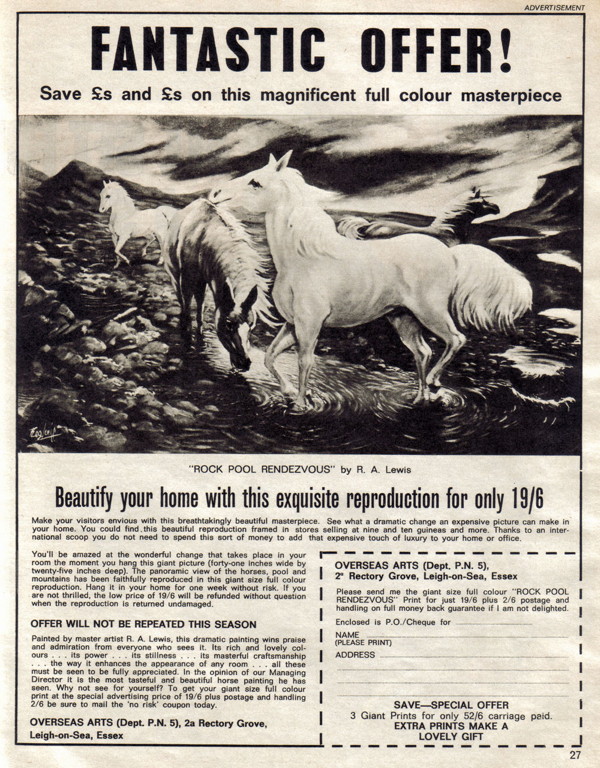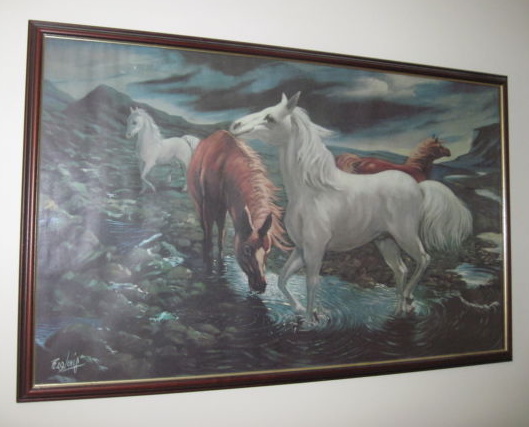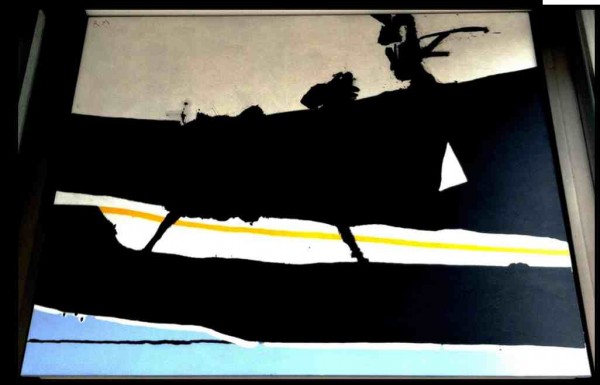Art
The Tattoo Hall of Fame
Back in June 2012, I posted about a guy down in Australia, Geoff Ostling, who hopes to have his tattooed skin hung on a gallery wall as art after he dies. I got the impression that Mr. Ostling thought his idea of displaying tattoo art postmortem was something new, but it turns out there already is a decades-old tattoo hall of fame.The April 3, 1950 issue of Life magazine included an article about Dr. Sei-ichi Fukushi, curator of the Imperial University of Tokyo's collection of tattooed human skins. As of 1950, he had already acquired 38 human skins which were on display in the University's gallery, and Dr. Fukushi was eager to expand the collection.

Posted By: Alex - Tue Dec 03, 2013 -
Comments (5)
Category: Art, 1950s, Tattoos, Skin and Skin Conditions
Metro the Painting Horse
Read more about Metro at NPR.
Posted By: Alex - Thu Nov 28, 2013 -
Comments (4)
Category: Animals, Art
It felt like i knew you
I'll let artist George Ferrandi describe her ongoing "project" in her own words:I'm guessing that guys who grope women's buttocks on crowded trains probably go through the same kind of mental wind-up.
Anyway, Ferrandi has a friend sitting opposite record the results of her space re-shaping.


Posted By: Alex - Tue Nov 26, 2013 -
Comments (5)
Category: Art
Beautify your home—guaranteed!


1968 advertisement via Curious Objects.
Posted By: Alex - Sun Nov 17, 2013 -
Comments (4)
Category: Art
Samuel Rowlett, the Peripatetic Artist

Sounds like Rowlett should team up with the "walking artist" Hamish Fulton. They'd make quite a pair.
And the same Gallerist NY article contains another nugget of weirdness:
I spent quite a few years pursuing a PhD that I never completed. If I had known there was the option of getting a PhD in Walking, that would have changed everything.
Posted By: Alex - Thu Nov 07, 2013 -
Comments (7)
Category: Art
Typewriter Art
Keira Rathbone creates elaborate drawings using an old 1960s typewriter. I guess someone must still manufacture ribbons for those things. She says she mostly uses dashes, slashes, and brackets. Letters are more useful for shading. You can check out more of her work at her website.
Posted By: Alex - Fri Nov 01, 2013 -
Comments (16)
Category: Art
Toyota’s Portrait-Drawing Car
As you drive, the car draws a portrait of you, based on how you drive.
Posted By: Alex - Thu Oct 31, 2013 -
Comments (1)
Category: Art, Cars
Suicide Machines
Created by artist Thijs Rijker. They're not machines that help people commit suicide. Instead, they're machines that slowly destroy themselves.One machine saws into its own structure, until eventually the saws will reach the engine. Another machine pours sand into its gearbox until the gears wear out.
Perhaps it's a metaphor for the planned obsolescence of modern consumer goods, which are designed to break down or wear out sooner rather than later, so that we constantly have to buy new stuff.
Posted By: Alex - Mon Oct 21, 2013 -
Comments (6)
Category: Art, Technology, Suicide
Abstract Controversy

This painting was commissioned and displayed in a public building in the 1960s. It immediately aroused ire and controversy and disgust. Can you guess why?
Answer after the jump.
More in extended >>
Posted By: Paul - Sun Oct 20, 2013 -
Comments (7)
Category: Art, Confusion, Misunderstanding, and Incomprehension, Death, Politics, 1960s
Mystery Painting

Posted By: Alex - Sun Oct 06, 2013 -
Comments (7)
Category: Art

| Who We Are |
|---|
| Alex Boese Alex is the creator and curator of the Museum of Hoaxes. He's also the author of various weird, non-fiction, science-themed books such as Elephants on Acid and Psychedelic Apes. Paul Di Filippo Paul has been paid to put weird ideas into fictional form for over thirty years, in his career as a noted science fiction writer. He has recently begun blogging on many curious topics with three fellow writers at The Inferior 4+1. Contact Us |




